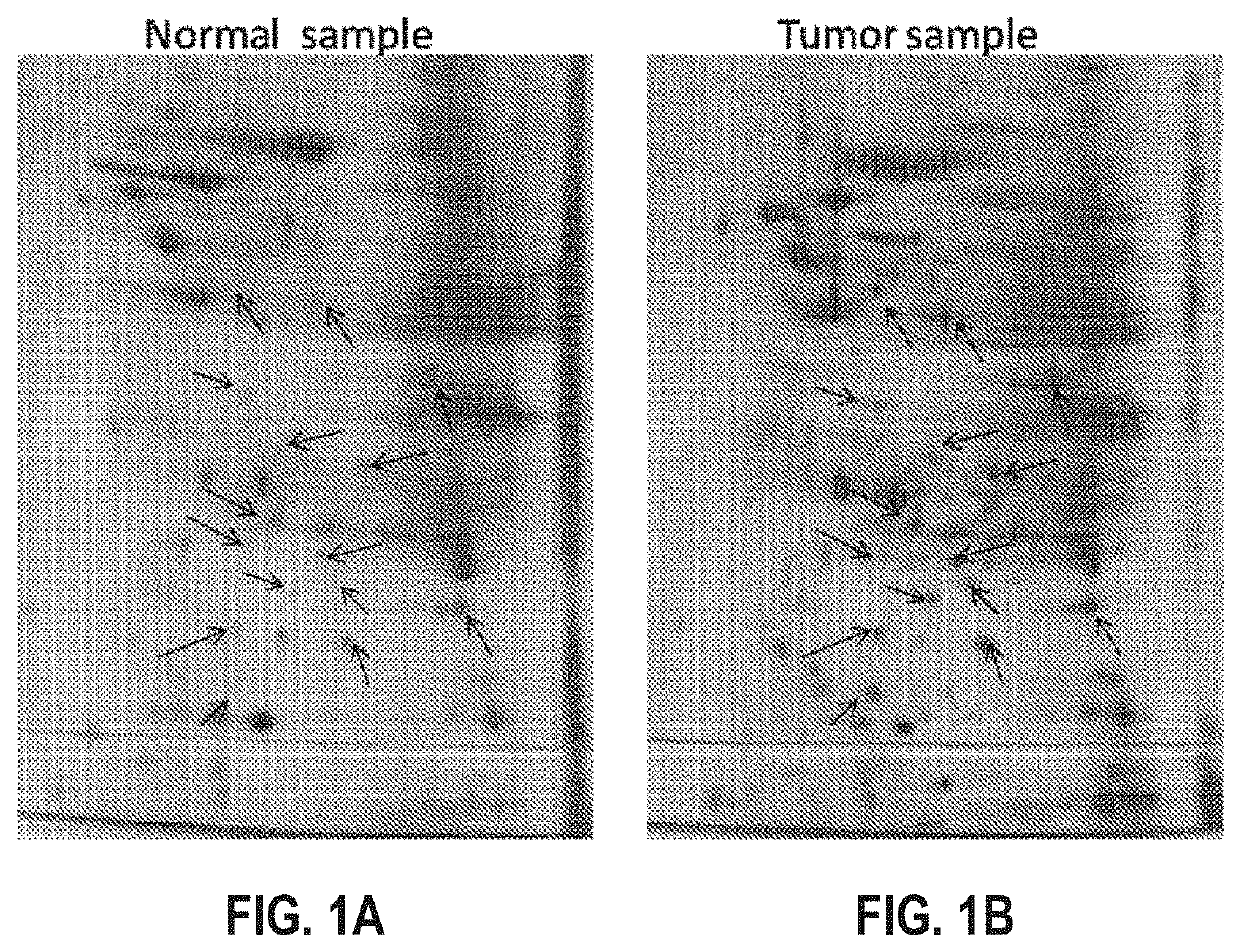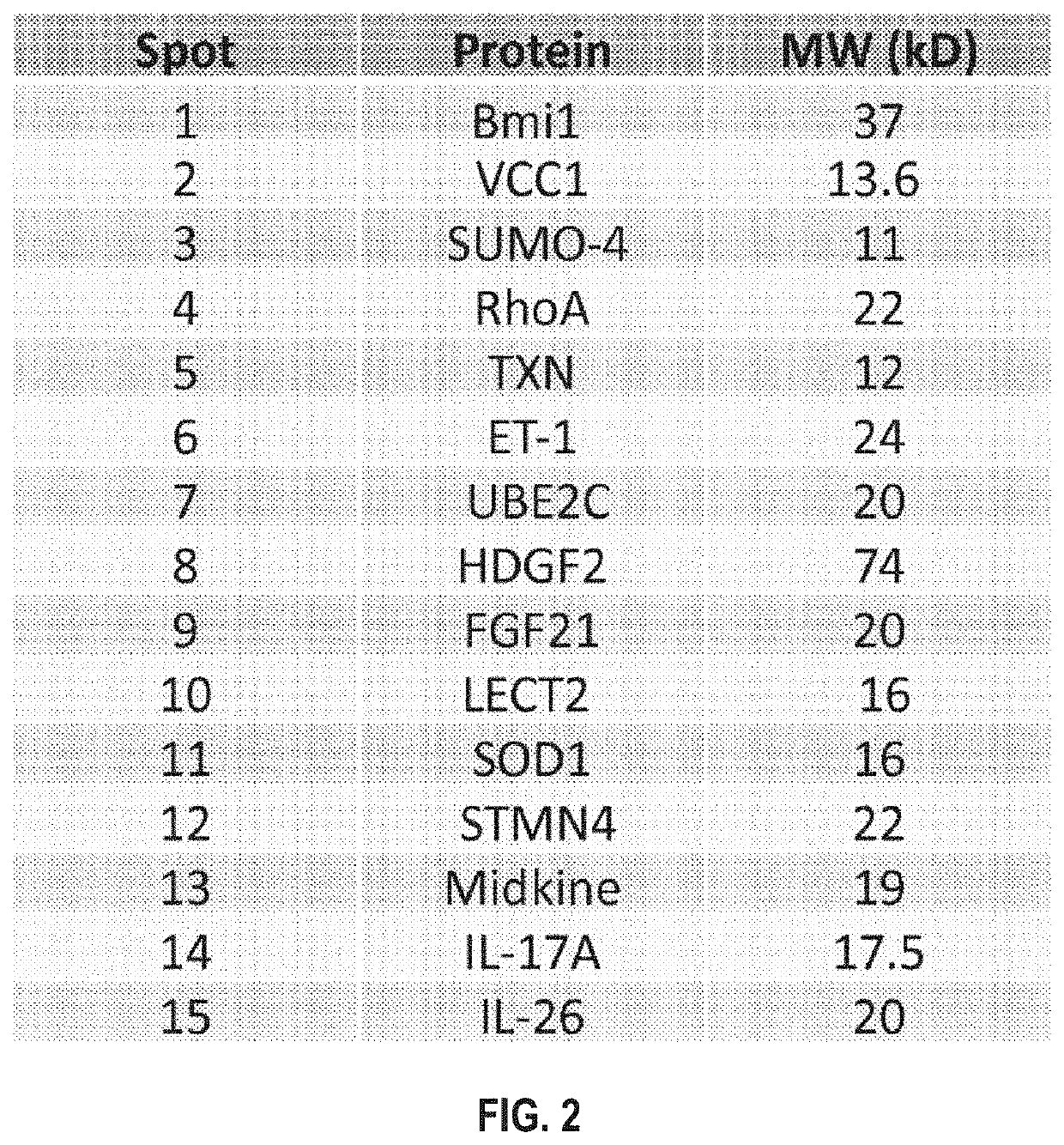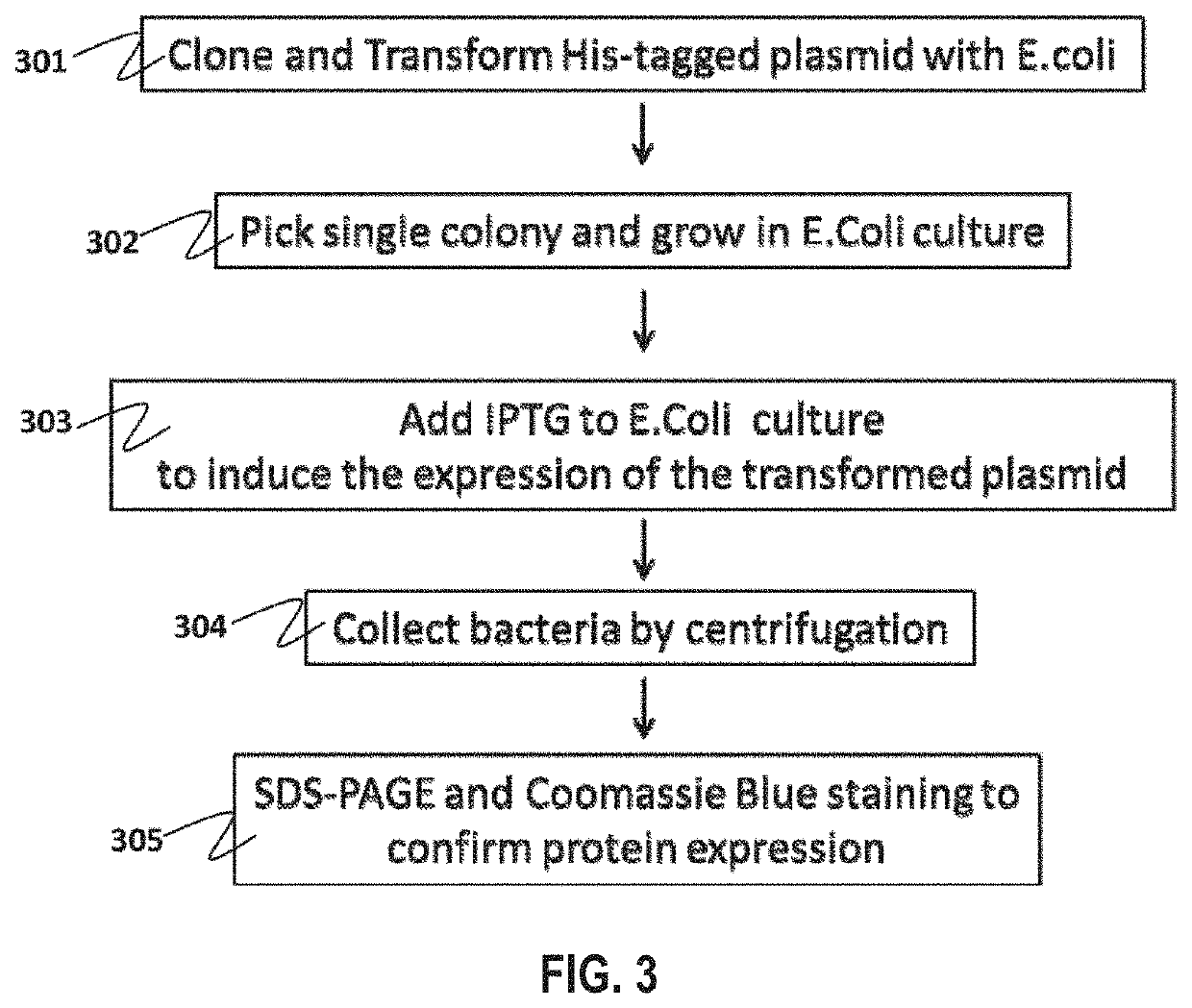Specific biomarker set for non-invasive diagnosis of liver cancer
a hepatocellular carcinoma and biomarker technology, applied in the field of specific and novel hepatocellular carcinoma tumor biomarkers, can solve the problems of high mortality rate, excessive false positives of afp tests, and inconclusive results, and achieve the effect of facilitating early detection of cancer
- Summary
- Abstract
- Description
- Claims
- Application Information
AI Technical Summary
Benefits of technology
Problems solved by technology
Method used
Image
Examples
example 1a
traction from Patients' Biopsies
[0121]500 mg of the paired patients' biopsies (tumor biopsy versus juxtaposed normal tissue) are collected and washed with PBS. The tissues were frozen by submerging into liquid nitrogen and immediately homogenized with pestle and mortar. To the homogenized samples, lysis solution (8M Urea, 4% CHAPS, 2% IPG Buffer, 0.2 mg / ml PMSF) was added, then vortex for at least 5 min until the tissues are completely dispersed. The lysates were then clarified by centrifugation at 14,000 rpm for 10 minutes at 4° C. The supernatants were further cleaned up by 2D Clean Up kit (Amersham) to remove the salt and impurities. The pellets were resuspended with minimum volume of Rehydration Solution (No DTT & IPG Buffer added). The protein concentrations were then measured by Bio-Rad™ protein assay and aliquots of 200 g / per tube are stored at −70° C.
example 1b
Proteins by Two-Dimensional Electrophoresis
[0122]To 1 ml rehydration stock solution, 2.8 mg DTT, 5 μl pharmalyte or IPG Buffer, and 2 μl bromophenol blue was added. 50-100 μg of protein sample is added to the 13 cm Immobiline DryStrip™ (IPG strip) containing 250 μl of rehydration solution. After removing the protective cover, the IPG strip was positioned in the strip holder with the gel side facing down, and overlaid with Cover Fluid to prevent dehydration during electrophoresis. The strip was then placed on to Ettan™ IPGphor™ (Amersham) for isoelectric focusing (first dimensional electrophoresis).
[0123]After the first-dimensional electrophoresis, the IPG strip was equilibrated with equilibrate solution (6 M Urea, 2% SDS, 50 mM Tris HCl pH 6.8, 30% Glycerol, 0.002% Bromophenol blue, 100 mg DTT per 10 ml buffer and 250 mg IAA per 10 ml buffer), and then washed with 1×SDS running Buffer for 4-5 times. The IPG strip was placed on top of the second-dimension gel and overlaid with sealin...
example 2a
of HCC Biomarker Set
[0125]His tagged plasmids containing cDNA inserts encoding the HCC biomarker set was transformed into DH5 competent cells (301, FIG. 3). A single colony was picked and allowed to grow in bacterial culture (302). The number of plasmid was expanded and extracted from the bacteria by mini-prep. The plasmid was further transformed into BL21DE3 or BL21DE3pLysS competent cells. Transformed bacteria were selected and grew in 2×100 ml LB medium. When the bacterial culture reached the optical density of 0.06, 200 μM of IPTG was added to 100 ml bacterial culture (303). Another 100 ml of bacterial culture without IPTG was used as negative control. The bacterial cultures were incubated at 30° C. with shaking. 500 μl of the bacterial cultures are saved and stored at −20° C. 3 h after the incubation and in the next morning after incubating overnight.
[0126]Bacterial cultures with and without IPTG induction were mixed together in a 500 ml centrifuge bottle. Bacterial cells were ...
PUM
 Login to View More
Login to View More Abstract
Description
Claims
Application Information
 Login to View More
Login to View More - R&D
- Intellectual Property
- Life Sciences
- Materials
- Tech Scout
- Unparalleled Data Quality
- Higher Quality Content
- 60% Fewer Hallucinations
Browse by: Latest US Patents, China's latest patents, Technical Efficacy Thesaurus, Application Domain, Technology Topic, Popular Technical Reports.
© 2025 PatSnap. All rights reserved.Legal|Privacy policy|Modern Slavery Act Transparency Statement|Sitemap|About US| Contact US: help@patsnap.com



